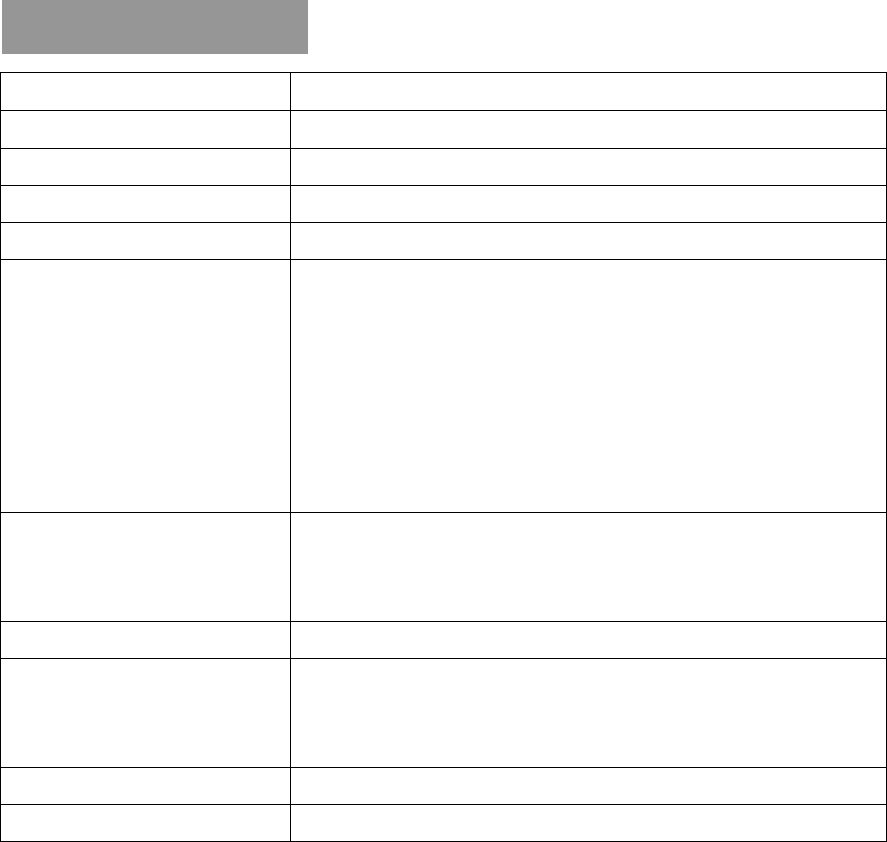Askey Computer WLU5080 Wireless LAN Adaptor User Manual manual draft 101123
Askey Computer Corp Wireless LAN Adaptor manual draft 101123
Contents
- 1. User Manual
- 2. user manual
User Manual

THE FOLLOWING APPLIES IN THE U.S.A. AND CANADA
This device complies with Part 15 of FCC Rules and RSS-Gen of IC Rules.
Operation is subject to the following two conditions:
(1) This device may not cause interference, and (2) this device must accept any
interference, including interference that may cause undesired operation of this
device.
This transmitter must not be co-located or operated in conjunction with any other
antenna or transmitter.
This product is restricted to indoor use due to its operation in the 5.15 to 5.25
GHz frequency range.
FCC and IC require this product to be used indoors for the frequency range 5.15 to
5.25 GHz to reduce the potential for harmful interference to co-channel Mobile
Satellite systems. High power radars are allocated as primary users of the 5.25 to
5.35 GHz and 5.65 to 5.85 GHz bands. These radar stations can cause interference with
and/or damage this product.
The available scientific evidence does not show that any health problems are
associated with using low power wireless devices.
There is no proof, however, that these low power wireless devices are absolutely safe.
Low power Wireless devices emit low levels of radio frequency energy (RF) in the
microwave range while being used.
Whereas high levels of RF can produce health effects (by heating tissue), exposure
to low-level RF that does not produce heating effects causes no known adverse health
effects.
Many studies of low-level RF exposures have not found any biological effects. Some
studies have suggested that some biological effects might occur, but such findings
have not been confirmed by additional research.
Wireless LAN adaptor has been tested and found to comply with FCC/IC radiation exposure
limits set forth for an uncontrolled equipment and meets the FCC radio frequency (RF)
Exposure Guidelines in Supplement C to OET65 and RSS-102 of the IC radio frequency
(RF) Exposure rules.
ENGLISH

THE FOLLOWING APPLIES ONLY IN THE U.S.A.
Federal Communication Commission Interference Statement:
This equipment has been tested and found to comply with the limits for a Class B digital device,
pursuant to Part 15 of the FCC Rules. These limits are designed to provide reasonable
protection against harmful interference in a residential installation. This equipment generates,
uses and can radiate radio frequency energy and, if not installed and used in accordance with
the instructions, may cause harmful interference to radio communications. However, there is no
guarantee that interference will not occur in a particular installation. If this equipment does
cause harmful interference to radio or television reception, which can be determined by turning
the equipment off and on, the user is encouraged to try to correct the interference by one or more
of the following measures:
Reorient or relocate the receiving antenna.
Increase the separation between the equipment and receiver.
Connect the equipment into an outlet on a circuit different from that to which the receiver is
connected.
Consult the dealer or an experienced radio/TV technician for help.
Any changes or modifications not expressly approved by the party responsible for compliance
could void the user's authority to operate this equipment.
This device complies with Part 15 of the FCC Rules.
Operation is subject to the following two conditions: (1) This device may not cause harmful
interference, and (2) this device must accept any interference received, including interference
that may cause undesired operation.
This device is restricted to indoor use when operated in the 5.15 to 5.25 GHz frequency range.
Responsible Party:
Panasonic Corporation of North America
One Panasonic Way
Secaucus, NJ 07094
Support Contact:
Panasonic Consumer Electronics Company
Telephone No.: 1-800-211-PANA (7262)

THE FOLLOWING APPLIES ONLY IN CANADA.
This Class B digital apparatus complies with Canadian ICES-003.
Product Identification Marking is located on the bottom of the Wireless LAN Adaptor.

Federal Communication Commission (FCC) /IC Radiation Exposure Statement
This EUT is compliance with SAR for general population/uncontrolled exposure limits in
ANSI/IEEE C95.1-1999/ IC RSS-102 and had been tested in accordance with the measurement
methods and procedures specified in OET Bulletin 65 Supplement C/ IEEE 1528. This
equipment should be installed and operated with minimum distance 0.5cm between the radiator
& your body.
FCC Radiation Exposure Statement:
This equipment complies with FCC radiation exposure limits set forth for an uncontrolled
environment. This equipment should be installed and operated with minimum distance 20cm
between the radiator & your body.
This Class [B] digital apparatus complies with Canadian ICES-003.
Cet appareil numérique de la classe [B] est conforme à la norme NMB-003 du Canada.

NCC
802.11b/802.11g/BT 警語:
第十二條→經型式認證合格之低功率射頻電機,非經許可,公司,商號或使用者均不得擅自變更頻
率、加大功率或變更原設計之特性及功能。
第十四條→低功
率
射頻電機之使用
不
得影響飛航安全及干擾合法通信;經發現有干擾現象時,應
立
即停用,並改善至無干擾時方得繼續使用。
前項合法通信,指依電信法規定作業之無線電通信。 低功
率
射頻電機須忍受合法通信或工業、科
學及醫
療
用電波
輻
射性電機設備之干擾。
802.11a 警語:
在 5.25-5.35 秭赫頻帶
內
操作之無線資訊傳輸設備,限於室
內
使用。 (4.7.5)
無線資訊傳輸設備忍受合法通信之干擾且
不
得干擾合法通信;如造成干擾,應
立
即停用,俟無干擾
之虞,始得繼續使用。 (4.7.6)
無線資訊傳設備的製造廠商應確保頻
率
穩定性,如依製造廠商使用手冊上所述正常操作,發射的信
號應維持於操作頻帶中。(4.7.7)

Be aware of the following limits before using the Wireless LAN Adaptor.
●To use the Wireless LAN Adaptor, an access point needs to be obtained.
●It is recommended to use the Wireless LAN Adaptor with the supplied extension cable.
●Do not use the Wireless LAN Adaptor to connect to any wireless network (SSID∗) for which you
do not have usage rights. Such networks may be listed as a result of searches. However, using
them may be regarded as illegal access.
∗SSID is a name for identifying a particular wireless network for transmission.
●Do not subject the Wireless LAN Adaptor to high temperatures, direct sunlight or moisture.
●Do not bend, or subject the Wireless LAN Adaptor to strong impacts.
●Do not disassemble or alter the Wireless LAN Adaptor in any way.
●Do not attempt to install the Wireless LAN Adaptor in any incompatible device.
●Do not remove the Wireless LAN Adaptor from the TV’s USB port during operations.
●Data transmitted and received over radio waves may be intercepted and monitored.
●To avoid malfunctions caused by radio wave interface, keep the TV away from the devices
such as other wireless LAN devices, microwaves and the devices that use 2.4 GHz and 5 GHz
signals when using the Wireless LAN Adaptor.
●When noises occur due to the static electricity, etc., the TV might stop operating for the
protection of the devices. In this case, turn the TV Off with Mains power On / Off switch, then turn
it On again.
●Depending on the area, this Wireless LAN Adaptor may not be available.
Caution

Confirm the encryption key, settings and positions of your access point before
starting setup. For details, read the manual of the access point.
(1) connect the Wireless LAN Adaptor to the USB port.
(2) Select the connection type and set.
Connection Type
WPS(Push button)
WPS(PIN)
Search for access point
Manual
(3-1) WPS(Push botton)
Press the WPS button on the access point until the light flashes.
And then, press the OK button.
(3-2) WPS(PIN)
Select your desired access point.
Enter the PIN code to the access point, and then select.
(3-3) Search for access point
Access points found automatically are listed.
Select your desired access point.
Access the encryption key input mode.
Enter the encryption key of the access point.
(3-4) Manual
You can setup SSID, authentication type, encryption type, and encryption key
manually. Follow the on screen instructions and set manually.
Setup the wireless LAN connection

Power supply DC 5V (USB powerd) 500mA
Antenna Tx 1, Rx 2
Interface USB 2.0
Standard Compliance IEEE802.11n / IEEE802.11a / IEEE802.11g / IEEE802.11b
Transmission system MISO-OFDM system, OFDM system, DSSS system
Frequency Range
IEEE802.11n / IEEE802.11a :
5.150GHz - 5.725 GHz for EU Countries
5.150GHz - 5.850 GHz for USA, Canada
5.250GHz - 5.850 GHz for Taiwan
IEEE802.11g / IEEE802.11b / IEEE802.11n:
2.412 GHz - 2.472 GHz for EU countries
2.412 GHz - 2.462 GHz for USA, Canadan, Taiwan
Transfer rate (standard) *
IEEE802.11n: Tx Max. 150Mbps, Rx Max. 300Mbps
IEEE802.11g / IEEE802.11a: Max. 54Mbps
IEEE802.11b: Max. 11Mbps
Access Mode Infrastructure mode
Security
WPA2-PSK (TKIP/AES)
WPA-PSK (TKIP/AES)
WEP (64bit/128bit)
Dimension (WxHxD) 30mm x 10.72mm x 94.85mm
Mass 25g Net
* Transfer rate are theoretical values; however, actual communication rate will vary
according to communication environment or connected equipment.
Specifications